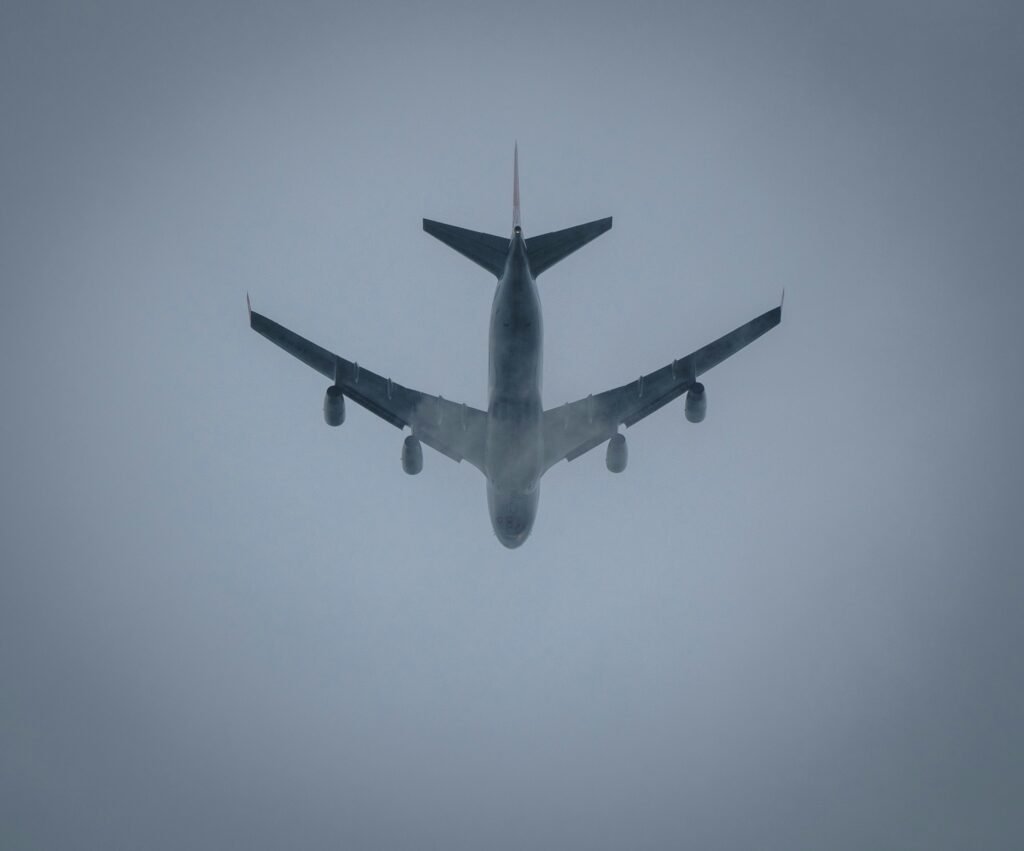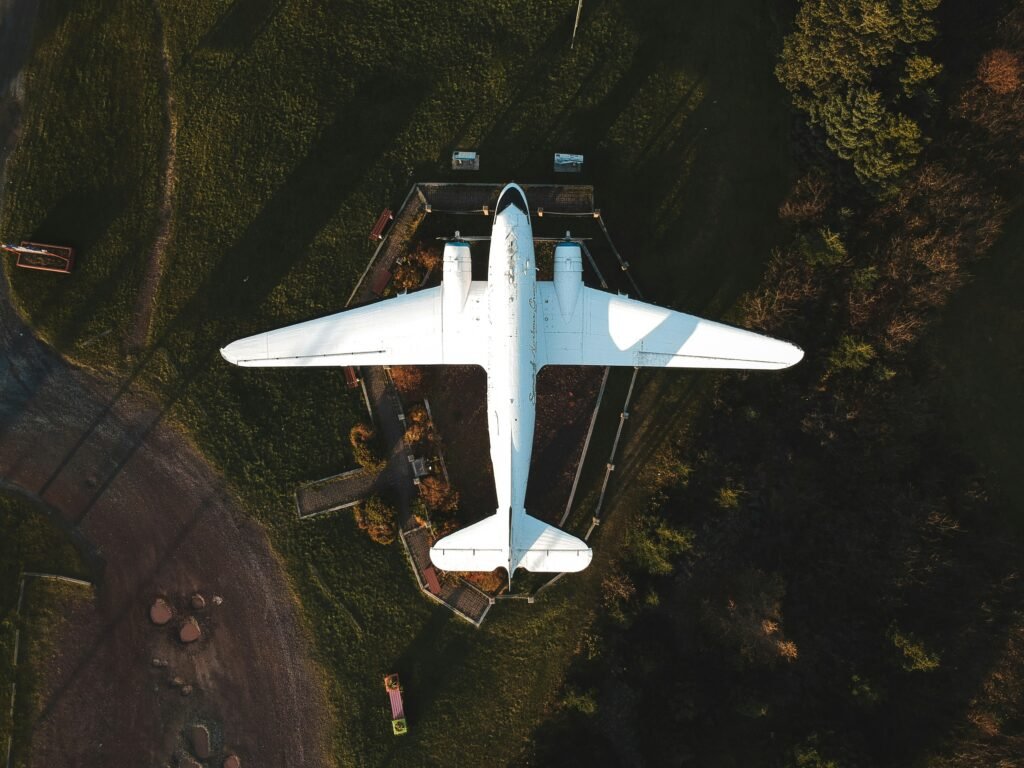
Introduction to the Airbus A320
The Airbus A320, introduced into service in 1988, represents a significant milestone in the evolution of commercial aviation. Developed by the European aerospace corporation Airbus, this aircraft was one of the first to incorporate digital fly-by-wire control systems, thereby enhancing both pilot efficiency and safety. The A320 family includes several variants, such as the A319, A320, and A321, which cater to different passenger capacities and range requirements. This versatility has made the A320 a popular choice among airlines around the globe.
With a typical seating capacity ranging from 140 to 240 passengers, depending on the specific model and cabin configuration, the Airbus A320 has become a mainstay in many airline fleets. Its design features a high wing layout and two powerful turbofan engines mounted under the wings, which contribute to its strong performance and fuel efficiency. The aircraft is also known for its spacious and quiet cabin, which has been a significant factor in enhancing the passenger experience while flying.
One of the Airbus A320’s vital contributions to the aviation industry is its role in the shift towards more economical air travel. By maximizing fuel efficiency and lowering operational costs, airlines have been able to offer competitive fares, thereby democratizing air travel for a broader audience. The A320 family’s modular design allows for flexibility in its configurations, making it suitable for a variety of flight operations including short-haul, medium-haul, and even transcontinental routes.
As a testament to its impact, the Airbus A320 has received numerous orders, making it one of the best-selling commercial jetliners in history. Throughout its operational history, the A320 has maintained a solid safety record, reinforcing its reputation as a reliable aircraft in commercial aviation. Overall, the Airbus A320 has not only transformed air travel but continues to play a crucial role in the future of flying.
Technical Specifications of the Airbus A320
The Airbus A320, a stalwart in the commercial aviation sector, boasts a range of technical specifications that facilitate its outstanding performance and operational efficiency. The aircraft measures approximately 123 feet (37.57 meters) in length, with a wingspan of about 113 feet (34.1 meters). Such dimensions allow it to maintain a comfortable balance between aerodynamics and seating capacity, significantly enhancing its flight performance.
In terms of weight, the A320 has a maximum takeoff weight that varies depending on the specific model, typically ranging between 68,000 to 78,000 pounds (approximately 30,000 to 35,400 kg). This weight capacity plays a critical role in defining the aircraft’s range and payload capabilities. It enables airlines to configure the A320 according to their operational requirements, accommodating various passenger counts and cargo loads.
Seating capacity for the Airbus A320 can vary markedly based on the cabin configuration chosen by the airline. Generally, it can accommodate between 140 to 240 passengers. This versatility allows carriers to optimize their fleet based on market demands, making the A320 suitable for both short-haul and medium-haul routes.
The engine types also contribute significantly to the performance of the A320. The aircraft is typically powered by either the CFM International CFM56 or the International Aero Engines V2500 engines. Each of these engines is renowned for its fuel efficiency and reliability, which help reduce operational costs while maintaining optimal performance.
Overall, the technical specifications of the Airbus A320, including its dimensions, weight, seating capacity, and engine types, collectively enhance its efficiency in the competitive commercial aviation landscape. These attributes not only support the aircraft’s operational roles but also reinforce its reputation for safety and reliability in air travel.
The Airbus A320’s Flight Mechanics
The Airbus A320 is a prominent figure in the aviation industry, known for its efficiency and reliability. A fundamental aspect of its design lies in its flight mechanics, which govern how it generates lift and thrust to achieve safe and effective flight operations. At its core, flight mechanics involve the principles of aerodynamics, where the interaction between the aircraft’s structure and the surrounding air plays a critical role in its performance.
One of the primary elements of flight is lift, which is the upward force generated by the wings as air flows over and under them. The Airbus A320’s wings are uniquely designed with a high aspect ratio and advanced aerodynamic features, including winglets that reduce drag. This design optimizes airflow and enhances lift, allowing the aircraft to take off and climb efficiently. During takeoff, the engines generate sufficient thrust to propel the aircraft forward, allowing air to move quickly over the wings. As the speed increases, the pressure difference between the upper and lower surfaces of the wings creates the lift necessary to leave the ground.
While in flight, the Airbus A320 maintains its cruising altitude by balancing lift and weight, with the engines continuously providing thrust to counteract drag. This equilibrium enables a smooth flying experience for passengers and minimizes fuel consumption. As the aircraft prepares for landing, the flight mechanics change. Pilots carefully manage the thrust and angle of descent to ensure a gentle approach that maintains lift while gradually reducing speed. The A320’s advanced flight control systems assist in maintaining optimal stability and maneuverability, making it easier for pilots to navigate during critical phases of flight. These features collectively contribute to the aircraft’s reputation for safety and efficiency, confirming its status as a favored choice in commercial aviation.
Flight Control Systems of the Airbus A320
The Airbus A320 features an advanced flight control system that significantly enhances its handling and safety. Central to this system is the fly-by-wire technology, which replaces traditional mechanical linkages with electronic interfaces. This technology allows pilots to operate the aircraft with greater precision and responsiveness, enabling smoother handling during various phases of flight. The fly-by-wire system processes pilot commands through sensors and computer algorithms, ensuring that the aircraft responds optimally and within safe limits, thus minimizing the risk of human error.
Another critical component of the A320’s flight control system is its sophisticated autopilot system. This system can engage at various flight stages, including takeoff, cruising, and landing. By automating certain aspects of flying, it allows pilots to focus on other important tasks, improving overall situational awareness. The A320’s autopilot can adjust to changing flight conditions dynamically, thereby enhancing safety and ensuring precise navigation throughout the flight. This capability is particularly beneficial during adverse weather conditions, where automatic adjustments can prevent abrupt maneuvers that may compromise flight safety.
In terms of navigation controls, the Airbus A320 is equipped with advanced avionics that facilitate efficient route management. These navigation systems integrate various technologies, including GPS and inertial navigation systems, which work together to provide accurate positioning and guidance. This level of precision not only enhances operational efficiency but also bolsters the safety of the aircraft by ensuring that it remains on its intended flight path.
Overall, the flight control systems of the Airbus A320—including fly-by-wire technology, autopilot systems, and navigation controls—constitute a comprehensive framework that significantly improves the aircraft’s handling and safety. By integrating these sophisticated technologies, the A320 sets a high standard in modern aviation.
Safety Features of the Airbus A320
The Airbus A320 family is renowned for its comprehensive safety measures that prioritize the well-being of passengers and crew. Central to these safety features is the aircraft’s advanced redundancy systems. Redundancy is essential in aviation, where critical systems like hydraulics, electrical power, and flight controls have multiple backups. This ensures that if one system fails, others will seamlessly take over, allowing the aircraft to maintain control and safety during flight operations.
Additionally, the A320 incorporates an array of emergency protocols designed for various in-flight scenarios. These protocols involve both automatic and manual interventions that the flight crew can utilize. For instance, the aircraft is equipped with automated warning systems that alert pilots to any anomalies or system failures, providing them with the necessary information to respond promptly. Furthermore, extensive pilot training programs emphasize the importance of these protocols, ensuring that crews are well-prepared to handle emergencies effectively. The combination of these training programs and sophisticated onboard systems contributes to the aircraft’s impressive safety record.
The structural integrity of the Airbus A320 also significantly contributes to its safety. The airframe is built using advanced materials and design techniques that enhance its durability and resistance to environmental stressors. For instance, the fuselage is designed to withstand high levels of pressure and impact, which is crucial during turbulence or emergency landings. Furthermore, the aircraft’s wing design provides excellent aerodynamic performance and stability, which is essential in maintaining control, especially under critical flight conditions.
In conclusion, the Airbus A320’s safety features, including redundancy systems, emergency protocols, and structural safety characteristics, work in conjunction to create a robust safety environment for all on board. These elements not only demonstrate Airbus’s commitment to aviation safety but also contribute to the confidence that passengers and airlines place in the A320 family of aircraft.
Airbus A320’s Safety Record
The Airbus A320 family of aircraft, which first entered service in 1988, has garnered a reputation for being one of the safest airliners worldwide. Statistical data reveal that despite having a large number of operations, the A320 has experienced a relatively low accident rate. The International Air Transport Association (IATA) reported that the A320 has a technical dispatch reliability rate of around 99.7%, indicating high mechanical reliability and adherence to safety protocols.
Throughout its operational history, the Airbus A320 has been involved in a number of incidents; however, many of these were attributed to external factors, such as adverse weather conditions, pilot error, or maintenance lapses, rather than inherent design flaws. Notably, the aircraft was in the spotlight during the high-profile US Airways Flight 1549 incident in 2009, where the pilots successfully ditched the plane in the Hudson River after bird strikes caused dual engine failure. The flight’s successful outcome highlighted the aircraft’s safety systems and the proficiency of its crew, enhancing the Airbus A320’s reputation within the aviation community.
Furthermore, thorough investigations, such as those conducted by aviation safety bodies like the National Transportation Safety Board (NTSB) and the European Union Aviation Safety Agency (EASA), have consistently confirmed the aircraft’s robust safety features. With innovations in technology, including Fly-by-Wire controls and advanced cockpit systems, the Airbus A320 is designed to minimize human error and improve safety margins significantly. These advancements contribute to the aircraft’s overall reliability, making it a preferred choice among airlines worldwide.
In conclusion, the safety record of the Airbus A320 reflects its excellent design and operational integrity, supported by positive statistical outcomes and successful incident management. Its standing in the aviation industry continues to affirm its position as a pioneering airliner dedicated to passenger safety.
Pilot Training and Procedures for Airbus A320
Operating the Airbus A320 requires a comprehensive training program designed to ensure that pilots are well-prepared to manage the aircraft efficiently and safely. The training process typically begins with ground school, where pilots gain an understanding of the aircraft’s systems, performance characteristics, and standard operating procedures (SOPs). This theoretical foundation is critical, as it equips the pilots with the knowledge necessary to navigate various flight conditions and technical scenarios they may encounter.
After completing ground school, pilots transition to simulator training, which is an integral component of their instruction. The Airbus A320 simulators replicate the aircraft’s flight deck and systems, allowing pilots to practice handling normal and emergency situations without any risk. This stage of training emphasizes the development of hand-flying skills, situational awareness, and decision-making under pressure. The fidelity of modern simulators ensures that pilots experience scenarios such as bird strikes, system malfunctions, and adverse weather conditions, preparing them for real-life situations they may face.
In addition to initial training, ongoing education and recurrent training sessions are essential for maintaining a pilot’s proficiency in operating the Airbus A320. Airlines often require pilots to undergo proficiency checks and simulator assessments every six months. These checks serve as a means to refresh their skills and update them on any technological advancements or procedural changes related to the aircraft. Continuous training is vital, as aviation safety regulations prioritize ensuring pilots remain adept at handling the latest advancements in technology and safety protocols.
Ultimately, the combination of thorough initial training, immersive simulator experiences, and regular assessments ensures that pilots of the Airbus A320 are well-equipped to operate the aircraft with the utmost skill and confidence, contributing to the overall safety record of this widely used airliner.
Comparative Analysis of the Airbus A320 and Similar Aircraft
The Airbus A320 family of aircraft has made significant strides in commercial aviation since its introduction, particularly through its innovative design and features. When comparing the A320 to other aircraft in its class, such as the Boeing 737 and Embraer E190, several critical factors come into play, including performance metrics, safety features, and operational efficiency.
In terms of performance, the Airbus A320 offers efficient range capabilities, typically flying distances of up to 3,300 miles depending on the variant. This aspect places it in competition with the Boeing 737, which also provides comparable range options. However, the A320 distinguishes itself with advancements in aerodynamics and engine technologies, including the use of the Pratt & Whitney PW1100G and CFM International LEAP engines, which enhance fuel efficiency while maintaining robust performance standards.
Another essential area of comparison is safety features. The A320 is equipped with state-of-the-art safety systems, such as fly-by-wire technology and an advanced flight deck that includes a glass cockpit. These enhancements are paralleled in the newer Boeing 737 MAX models, which also incorporate cutting-edge technology but faced scrutiny due to safety incidents in the past. While both aircraft have strong safety records, the A320’s proven history and rigorous safety protocols contribute to its reputation as a reliable choice in the commercial sector.
When discussing operational efficiency, the Airbus A320 family showcases reduced maintenance costs due to its modern design and material use. Comparatively, while the Boeing 737 has made strides in maintaining cost-effectiveness, the A320 series is often favored by airlines for its overall lower operating expenses and higher passenger capacity. Thus, from performance and safety metrics to operational efficiency, the Airbus A320 stands out as a leading player in the narrow-body aircraft market.
Conclusion: The Future of the Airbus A320
In reviewing the Airbus A320’s legacy, it is evident that this aircraft has not only revolutionized commercial aviation since its inception but is also poised for continued significance in the future. The A320 is renowned for its fuel efficiency, operational flexibility, and passenger comfort, all of which have contributed to its popularity among airlines globally. Its advanced fly-by-wire technology has set a benchmark for safety and performance that other aircraft models aspire to achieve.
Looking ahead, the Airbus A320 is likely to undergo several technological advancements. With the ongoing demand for more environmentally friendly operations, enhancements in fuel efficiency and reduced emissions will be paramount. The development of the A320neo (New Engine Option) series illustrates Airbus’s commitment to evolving this aircraft to meet both market needs and environmental considerations. This model incorporates new, fuel-efficient engines and wing modifications, leading to substantial reductions in fuel consumption and carbon emissions.
Furthermore, as airlines increasingly focus on sustainability, the potential introduction of alternative propulsion systems, such as electric or hybrid technologies, could be explored for future iterations of the A320. The integration of smart technologies for improved aerodynamics and connectivity is also a likely focus, enhancing both operational efficiencies and passenger experiences. With these advancements, the A320 family will remain relevant in a fast-evolving aviation landscape.
In conclusion, the enduring significance of the Airbus A320 in the aviation industry is a testament to its design, operational versatility, and safety record. As technology continues to advance and the market evolves, this aircraft is expected to adapt, further solidifying its place in commercial flight for years to come. The future of the A320 appears promising, with innovations on the horizon that will drive its success well into the next generation of aviation.




1 thought on “Understanding the Airbus A320: How it Flies and Its Safety Record”